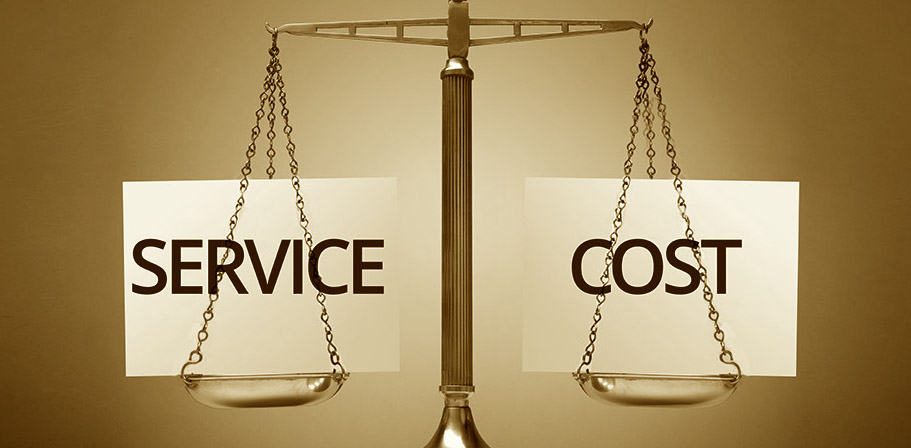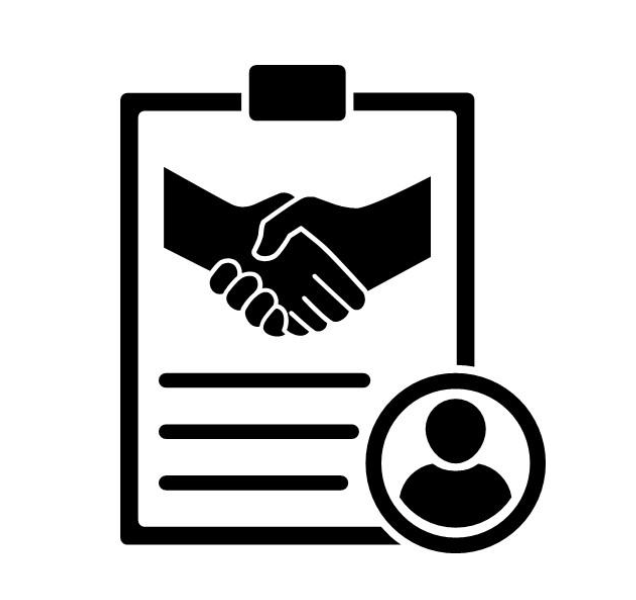


How Has Technology Modernized Trucking?
We live in a world of fast-paced technological advancements, which have fundamentally shifted the way things are done. Most companies have embraced technology to streamline critical processes to help reduce COGs. For workers, technology has helped make job duties faster and easier to perform. Due to the increased level of disruption, innovation has had a significant imprint on the supply chain. The trucking industry has seen many recent advancements which have provided benefits for trucking companies, truck drivers, and shippers. Let's dive a little deeper. Improved safety: advanced safety features such as lane departure warnings, collision avoidance systems, and electronic stability control have reduced trucking accidents. Better Customer Service: GPS and telematics systems track trucks in real-time so everyone knows the exact location and status of trucks leading to improved efficiency, reduced downtime, and better customer service. More loads: AI-powered software dynamically matches shipper loads with compliant carriers who are notified via mobile app. With freight brokers eliminated, carriers bid directly on loads resulting in more money in the carrier’s pocket. Increased efficiency: ELDs have replaced paper logs, making it easier for drivers to comply with hours-of-service regulations. ELDs also provide more accurate data on driver behavior and performance, helping companies to improve safety and efficiency. Stronger Decision Making: collecting and analyzing data means stronger decisions related to operations, including driver behavior, fuel usage, and maintenance records to improve efficiency, reduce costs, and enhance safety. Greater connectivity: Wi-Fi allows drivers to communicate with families and colleagues and access important info while on the road. So no matter what company you work for, or what job you perform, chances are you...
Chances are your supply chain already supports DEI and you don’t even know it!
Although CSCO’s continue to deal with unprecedented disruption, many remain committed to diversity, equity, and inclusion [DEI] initiatives. In other words, prioritized efforts to make a more welcoming environment for employees, suppliers, and customers. The 2022 Gartner and Association for Supply Chain Management (ASCM) DEI survey found that 93% of the largest, global supply chain organizations have DEI goals, with a strong intent to support women and underrepresented races and ethnicities. Smaller to med-size shippers may not realize that their supply chain, specifically their transportation management efforts, may already support DEI. Big corporations include supplier or vendor diversity as part of their broader DEI efforts. A diverse supplier is a business that is at least 51% owned and operated by an individual or group that is underrepresented or underserved, such as small-business enterprises (SBEs), minority-owned enterprises (MBEs), woman-owned enterprises (WBEs), LGBQT, veterans, and proprietors with disabilities. Forward-thinking shippers have made a conscious effort to provide these diverse business partners equal opportunities within their supply chain. Why Supplier/Vendor Diversity Is Important "Aside from moral and ethical considerations, there are several benefits to launching supplier diversity programs," said Jaimie Kowalski, VP of Sleek Marketing. "An inclusive freight procurement strategy broadens the pool of carrier suppliers which promotes healthy competition, improving on-time delivery, and reducing transportation cost." When supply chains have more sourcing options, they become more resilient and agile which is a must in today’s uncertain times. One Tip To Uncover DEI Within Your Supply Chain If you are a manufacturer, retailer or distribution center you probably use carriers to haul freight. And if you use small to medium-sized carriers [with less...
Digitization Helps Conquer Supply Chain Disruption
Disruption, and economic pressures to decrease costs without impacting business outcomes, have forced many large shippers to rethink how quickly they plan to optimize supply chain procedures. Unfortunately, in today's world, emerging risks can no longer go unchecked. In hopes to lower supply chain costs and improve supply chain resilience and sustainability, shippers have accelerated innovation efforts and are set to increase supporting budgets over the next 2 years. As a result, shippers have made supply chain digitization a major company priority with goals to advance and optimize order fulfillment, customer experience, and transportation management. So what's the difference between a traditional versus digitized supply chain? Although traditional supply chains use technology, the technology is usually standalone and lacks integration. A digital supply chain removes silos and provides seamless transparency for all supply chain teams. Another major difference is that traditional supply chains leverage historical data, whereas digital supply chains use real-time data. Real-time insights are important when making transportation management decisions because of freight market volatility. Lastly, traditional supply chains move slow because they involve manual processes. Digital supply chains use technology that replaces manual work with automation, and even better... if automation is powered by machine learning the shipper is armed with AI to dynamically pivot with little notice as disruption occurs. In the end, when the supply chain is digitized, shippers reduce time-to-market, maximize productivity, reduce cost, and most importantly improve customer satisfaction which feeds into the bottom line. Supply Chain Digitization Example [AI-Powered Freight Procurement] Award-winning software has advanced and automated transportation management, also known as freight procurement. AI-powered technology eliminates the hours-long, manual process of...
Top Tip To Quickly Mitigate Rising Warehousing & Rail Costs.
Disruption across the supply chain continues to increase costs for shippers. In fact, disruption looms all around us which has forced many shippers to think creatively about how and where to cut expenses. “More than ever, logistics budgets are constrained, which is forcing shippers to find out-of-the-box ways to cut costs,” said Michael Paul, VP of Sales at Sleek Technologies. “One area where innovative shippers have quickly reduced spend is transportation, specifically full truckload (FTL) cost.” Warehousing Disruption The recent spike in warehousing cost is a result of higher demand for storage space, along with increased labor costs. Looking at Q2 2022, less than 4% of warehouse space sat empty, which is a 27-year low. Rent cost increased by 10%+ in 2022, compared to 2021. And reports have stated that 2023 will see an increase of 8.8%. Therefore, shippers should plan for more disruptions at the ports, and more inventory sitting in containers as it waits for warehouse space. The inventory ratio will continue to rise, which means increased costs related to demurrage and detention for ocean boxes. When goods are finally ready to be transported to an available warehouse/distribution center, shippers will need to react quickly by securing compliant, over-the-road capacity. Rail Disruption Warehousing is not the only factor related to increased supply chain cost. The Railroad Workers Union is predicting more disruption. Although Congress halted the railroad workers' strike a few months back, major pain points still exist such as staff shortages, long hours, and lack of paid sick days. If some or all of the 60,000 railroad union members go on strike, nearly 30% of the nation’s...
Need to revitalize your TMS? Here’s a quick and easy tip!
If you are in transportation you are probably familiar with a transportation management system, also called a TMS. Serving as the logistics central hub, the TMS helps shippers plan, execute and optimize the movement of goods with the goals of improving supply chain efficiency while strengthening customer service and compliance. While a TMS offers numerous benefits, as with any software platform, once launched there are often oversights, gaps, and missed opportunities. Many shippers believe they are stuck with what they have because there is a preconceived notion that it is difficult to modify or upgrade your TMS without consuming more resources or disrupting day-to-day business. This is simply not true. TMS Software Plugin Upgrades TMS Without Disrupting Business Software plugins can quickly and easily enhance the performance of existing software systems by adding new features and functions not available, or not required when implemented. For logistics specifically,a new innovative TMS plugin has helped transportation teams easily advance the freight procurement process by providing access to thousands of complaint carriers in seconds using AI/ML algorithms. Shippers have stated that many TMS platforms do not provide advanced freight procurement solutions, which results in shippers spending hours finding and vetting compliant carriers. They also spend time manually tracking shipments and then dealing with carrier invoicing and billing. All of these time-consuming tasks can now be automated using technological advancements. To read "Maximize Your TMS Investment" and learn more about this topic, click here.
Why Transportation Teams Are Setup to Fail
Plans are just that… plans. They are never set in stone and oftentimes fall apart. The world’s best planners spend as much time- if not more- developing a strong contingency plan for when the original plan falls apart to avoid disruption. The same goes for logistics and transportation teams. The routing guide is a plan, and when executed flawlessly contracted carrier obligations are met and all loads are covered. Now imagine if flawless execution happened every time... we can dream, right? Unfortunately, we know the routing guide will fall apart. So what can shippers do today, to prepare for tomorrow? Traditional Way to Secure Spot Coverage Transportation teams are on the hook to deliver goods on time so customers remain happy while paying a fair truckload cost so expenses can be managed. Unfortunately, traditional freight procurement processes to secure spot coverage force shippers to prioritize either cost or services- not both! “Loads need to move, that’s a fact. When transportation teams are forced to prioritize cost or service they can't succeed,” said George Belle, Head of Sales Engineering at Sleek Technologies. "Both cost and service need to be taken into consideration." In the traditional freight procurement process, after a load passes contractual obligations, shippers have 2 methods to secure spot coverage: Waterfall: focused on cost, shippers connect with carriers sequentially one by one. If the carrier refuses the offer, they move on to the next in line. This process can take many hours. Broadcast: focused on time, shippers connect with all carriers at the same time. Whoever accepts the offer first, wins. The Spot Safety Net AI-powered software has advanced...
Can Shippers & Carriers Both Win in Freight Procurement? Technology Says… Yes They Can!
Freight logistics knew one truth for decades: money was a game, and someone won while someone else lost. For years, freight brokers have strategized to make the biggest amount of money they could, generally at the expense of one of the other players. The market would decide who had an advantage in each round, and that advantage was subject to change at the drop of a hat or, more accurately, at the occurrence of any disaster, legislation, or shift in the economic balance, big or small. But what if smart technology came along and advanced traditional freight procurement thinking, helping both the shipper and carrier win? Guess what…. smart technology has finally arrived! AI-Powered Freight Procurement Technology We know that technology benefits humanity by putting the world in the palms of our hands. We have the benefit of being connected, globally, to anything we want to purchase, anywhere we want to go, friends and family we want to talk to or discover, and anything we want to learn. When it comes to logistics, there is no difference. Technology instantly connects freight to compliant carriers whenever and wherever needed, so both the shipper and carrier come out on top. Technology does us the favor of removing waste. When freight brokers serve as the moderator of the game, it takes shippers hours to find, vet, and transact with new carriers. AI-powered technology dynamically matches shippers’ loads to compliant carriers in seconds using configured attributes. Only carriers who pass the pre-qualification algorithms are given a chance to bid directly on a load. With the middleman eliminated, the carrier makes more money in their...
Onboard New Carriers in Seconds Instead of Hours
Freight procurement is a critical process within the supply chain. The key to success is moving goods on time while paying a fair market price, so end customers’ sales orders arrive on schedule. One of the primary puzzle pieces to freight procurement is securing compliant carriers (trucks and drivers) to move the freight. Unfortunately, the carrier onboarding process is cumbersome. According to Dean Corbolotti, VP of Managed Services at Sleek Technologies, “Onboarding new carriers correctly can take hours at best. And with everything else the transportation team has to juggle, it’s no wonder they limit the number of carriers they do business with." Finding and Vetting Carriers Finding and vetting carriers is a time-consuming process, which is required before any carrier can be added into a shipper's network. Traditionally, shippers would go to a public board and look for carriers based on specific criteria. They would dig into things like compliance, safety, accountability (CSA) scores, insurance/ liability, and operating authorities. Once a carrier passes the initial screening process, forms and data entry are required to solidify the new partnership which slows down the process even more. Automating Carrier Onboarding Updating the manual process of finding, vetting, and onboarding new carriers with automation software makes the process much faster. It goes from hours to seconds. Using a shipper’s specific load attributes, along with the carrier’s attributes, AI/ML algorithms go to work to dynamically match loads to compliant carriers. All of the onboarding leg work is done dynamically, eliminating the need for manual research. Plus with automatic daily compliance checks, shippers gain peace of mind! Expanding Freight Capacity Without automation, shippers rely...
